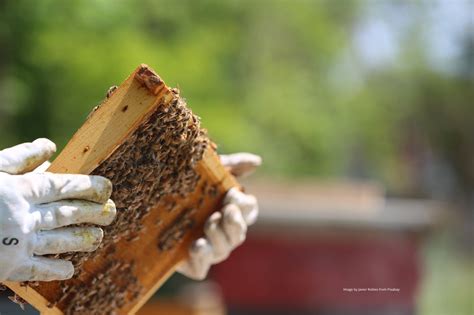The world of beekeeping is a fascinating and rewarding pursuit, offering a unique blend of science, nature, and community. For those just starting out, the prospect of managing an apiary can seem daunting, but with the right guidance, anyone can become a proficient beekeeper. In this comprehensive guide, we’ll delve into the fundamentals of bee biology, apiary setup, and management techniques, providing you with the expertise to thrive in this captivating field.
Understanding Bee Biology
Before diving into the practical aspects of beekeeping, it’s essential to grasp the basics of bee biology. Honey bees (Apis mellifera) are social creatures that live in colonies, each consisting of a single queen, thousands of worker bees (females), and a few hundred drones (males). The queen bee is responsible for laying eggs, while the worker bees handle foraging, caring for young, and defending the colony. Drones, on the other hand, have only one purpose: to mate with the queen.
Bee colonies are incredibly organized, with different castes performing specific tasks. The lifespan of a worker bee varies depending on the time of year, with summer bees living for approximately six weeks and winter bees surviving for several months. The queen, however, can live for up to five years.
Setting Up Your Apiary
When setting up your apiary, it’s crucial to choose a location that provides the right conditions for your bees to thrive. Look for a spot that receives at least six hours of direct sunlight a day and is protected from strong winds and extreme temperatures. Ensure that your apiary is easily accessible and has a reliable source of water nearby.
There are several types of beehives to choose from, including Langstroth, Top-bar, and Warre hives. Each has its own unique characteristics, advantages, and disadvantages. Langstroth hives, for example, are one of the most popular choices among beekeepers, offering a great balance between ease of use and honey production.
Managing Your Colony
Effective colony management is critical to the success of your apiary. This involves regular inspections, monitoring for pests and diseases, and performing tasks such as splitting colonies and harvesting honey.
During inspections, look for signs of a healthy colony, including:
- A strong, active queen
- Plenty of brood (immature bees)
- Adequate food stores
- No signs of disease or pests
You’ll also need to monitor for common issues like varroa mites, small hive beetles, and American foulbrood. Keeping accurate records of your inspections and observations will help you identify potential problems early on and take corrective action.
Best Practices for Hive Maintenance
To keep your hive in top condition, follow these best practices:
- Regular Cleaning: Clean your hive and equipment regularly to prevent the buildup of debris and disease.
- Proper Ventilation: Ensure good airflow within the hive to maintain a healthy environment.
- Adequate Food: Provide supplemental food, such as sugar or honey, during times of low nectar flow.
- Pest Control: Implement integrated pest management strategies to minimize the use of chemicals.
- Record Keeping: Maintain detailed records of your colony’s health, growth, and productivity.
The Art of Honey Harvesting
Harvesting honey is one of the most rewarding aspects of beekeeping. Before extracting honey, ensure that your colony has a sufficient surplus, typically around 60-80 pounds. Use a honey extractor to avoid damaging the comb, and always leave enough honey for the bees to survive the winter.
Harvesting Honey: A Step-by-Step Guide
- Prepare your equipment: honey extractor, frames, and supers.
- Smoke the bees to calm them and prevent stings.
- Remove the supers and extract the honey.
- Return the supers to the hive, ensuring the bees have enough honey for winter.
Troubleshooting Common Issues
As a beekeeper, you’ll inevitably encounter challenges. Here are some common issues and their solutions:
- Swarming: Prevent swarming by monitoring for signs of queen cups and performing splits.
- Pests: Implement integrated pest management strategies, such as introducing beneficial insects or using organic treatments.
- Disease: Quarantine infected colonies, and treat with antibiotics or other medications as needed.
The Future of Beekeeping
As the world grapples with environmental challenges, the importance of beekeeping has never been more pronounced. Bees play a vital role in pollinating crops, and their decline threatens global food security. By adopting sustainable beekeeping practices, such as using natural treatments and promoting biodiversity, we can help preserve these incredible pollinators for generations to come.
FAQ Section
What is the ideal temperature for a bee colony?
+The ideal temperature for a bee colony is between 92°F and 97°F (33°C and 36°C). This range allows the bees to maintain a stable environment and optimize their activities.
How often should I inspect my beehive?
+Inspect your beehive every 7-10 days during peak season (spring and summer) and every 4-6 weeks during the off-season (fall and winter). This frequency allows you to monitor the colony's health and address any issues promptly.
What is the best way to protect my bees from pesticides?
+To protect your bees from pesticides, avoid using chemical treatments in your garden, and instead opt for natural methods like introducing beneficial insects or using physical barriers. Additionally, choose pesticide-free plants and support local, sustainable agriculture.
In conclusion, beekeeping is a rewarding and complex pursuit that requires dedication, knowledge, and passion. By understanding bee biology, setting up a well-maintained apiary, and implementing effective management techniques, you’ll be well on your way to becoming a successful beekeeper. Remember to stay up-to-date with the latest research, best practices, and environmental concerns to ensure the long-term health and prosperity of your bees. Happy beekeeping!



